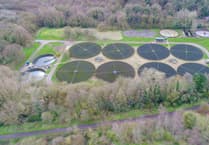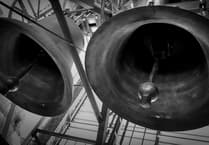School energy costs have more than doubled in Bath and North East Somerset over the past academic year, new figures show.
Amid last year's soaring gas and electricity prices, separate analysis suggests a significant proportion of school buildings across the country are suffering from poor energy efficiency, despite some improvement in recent years.
Figures from the Department for Education show £466,000 was spent on energy for local authority-run schools in Bath and North East Somerset in the 2022-23 academic year – more than double the £200,000 spent the year before.
However, 2015-16 saw the highest expenditure in recent years, at £809,000.
Across England, expenditure on energy for local authority-maintained schools hit £485 million in 2022-23 – a 61% increase on the year before, when £302 million was spent.
Almost every local authority saw a rise, with 74% recording their highest spending since at least 2015-16. One local authority, Bolton, saw expenditure nearly triple compared to the year before.
The Local Government Association – a membership body for local authorities – said many schools have been voicing concerns about their financial stability.
Louise Gittins, chair of the LGA’s Children and Young People’s Board, said schools are facing higher costs from "fuel, energy and food for school meals, alongside the need to fund agreed staff pay rises, and support for a growing number of pupils experiencing disadvantage."
Schools in Bath and North East Somerset spent £179 per pupil on energy in 2022-23, up from £75 the year before.
The LGA urged further Government support for schools in the upcoming Spring Budget.
Separate analysis of energy efficiency ratings suggests many English school buildings are underperforming.
Across England, a fifth of all school buildings receiving display energy certificates last year were in the lowest, most polluting categories (E to G) – meaning they are not up to standard. However, this does represent an improvement – in 2018, around a third of ratings were in these categories.
DECs are designed to show the energy performance of public buildings, using a scale from ‘A’ to ‘G’ - ‘A’ being the most efficient and ‘G’ being the least.
Of the 16,700 buildings receiving a certificate, just 55 were rated A, and 831 received a B.
In Bath and North East Somerset, eight of the 71 school buildings rated last year were in the worst categories – emitting the most carbon dioxide and wasting more energy.
An estimated 50 out of the 92 of schools in the area had a building evaluated last year.
These figures include academies and independent schools. Larger buildings require energy certificates more regularly, so bigger schools may be overrepresented in the figures.
Daniel Kebede, general secretary of the National Education Union said schools have been left to their own devices to deal with "leaky, draughty, energy inefficient buildings" and higher bills.
He said: "In the medium term we need a massive retrofit programme to make school buildings fit for the future – safe, energy efficient and able to play their part in creating a safe climate future for children.
"For many schools, however, the problems are such that rebuilding is the only answer, but the Government's record on this is woeful."
A Department for Education spokesperson said: "We know that schools have faced increased energy bills. We took account of this and made additional investment in total school funding to cover costs – a £4 billion increase in 2022-23, and a further £3.9 billion this year.
"School funding is rising to more than £59.6 billion next year – the highest ever level in real terms per pupil."




